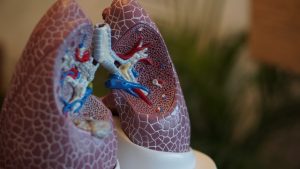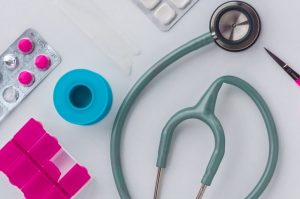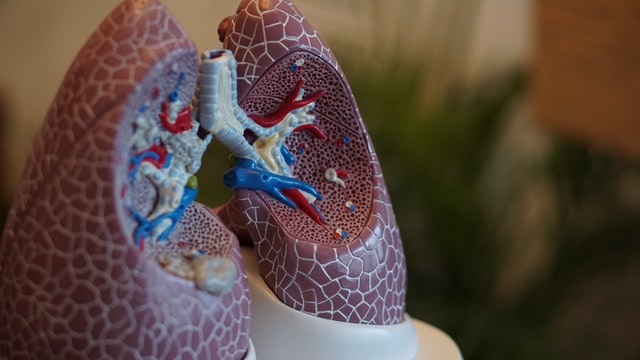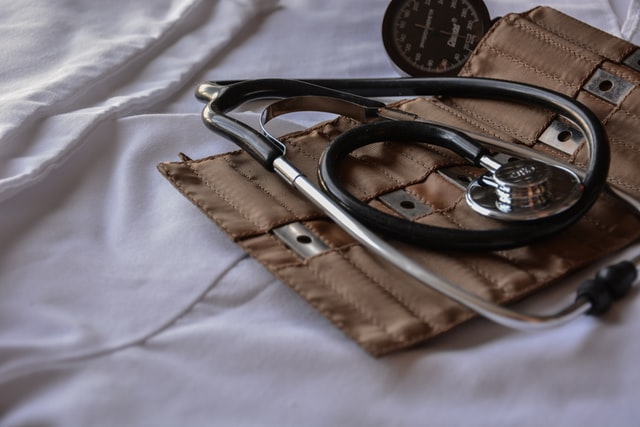The respiratory system consists of a network of tissues and organs that work together to allow you to take in air. It consists of your airways, lungs, and blood arteries, among other things. The respiratory system includes the musculature that operates your lungs as well as the rest of your body. These organs work together to transport oxygenated blood and remove waste gasses such as carbon dioxide from the system.
The respiratory system is considered a challenging part of the TEAS exam. Therefore, the TEAS respiratory system study guide can be considered one of the most effective ways to boost your score on this test. In this article, we will provide you with an overall view of the ATI respiratory, as well as a respiratory system study guide to successfully ace this. Don’t forget to take our TEAS practice test for free to maximize your score.
Basic Types Of The Respiratory System
The structure of the respiratory system is adapted to the need for oxygen. Protozoans, for example, use their whole bodies to exchange oxygen and carbon dioxide. Diffusion lengths are larger in multicellular organisms, thus different techniques are often used. In order to keep the outside medium at their surfaces fresh, watery worms, for illustration, extend and flatten their bodies. The ebb and flow of the surrounding water are essential to the survival of sessile sponges. Because its organic matter content is less than 1% and its involvement in the metabolism cells is placed just under the surface, the jellyfish, which may grow to be fairly big, has a low oxygen need.
Gills, lungs, specific sections of the gut or throat (in some fishes), or tracheae are all examples of particular respiratory structures that are necessary for larger organisms to meet their oxygen demands. Attenuated shapes and large semi-permeable surfaces in proportion to volume characterize respiratory structures. Fluids circulate through them on a regular basis.
The outside oxygen-containing medium is replenished by one kind of pumping mechanism, while bodily fluids are circulated through the respiratory system by another. The heart pumps the blood through the lungs’ respiratory surfaces as the muscles contract and relaxes, creating the pressure differences required to inflate or deflate the lungs. The heart pumps the oxygenated blood back to the different tissues where it is used, and the process repeats itself over and over again.
Functions Of The Respiratory System
Exchange of Gases
During respiration, oxygen from the surrounding air is exchanged for carbon dioxide created by the body’s cells in the alveoli of the lungs. Through the conducting airways, oxygen-rich fresh air is drawn into the lungs and expended therefrom. It is the respiratory muscles that provide the forces that cause air to flow; these muscles operate on orders that are begun by the central nervous system.
Meanwhile, the right ventricle of the heart pumps venous blood returning from the different bodily tissues into the lungs, which helps to keep the body cool. This mixed venous blood has a high concentration of carbon dioxide and a low concentration of oxygen. The exchange of carbon dioxide for oxygen from the alveoli takes place in the pulmonary capillaries. The left side of the heart is responsible for distributing oxygen-rich blood to the body’s tissues after it has exited the lungs. The blood exiting the lungs now has a high concentration of oxygen and a low concentration of carbon dioxide. As a result of expiration, the body expels gas that contains a significant proportion of carbon dioxide.’

Acid-Base Equilibrium
Increases in carbon dioxide concentration result in increases in hydrogen ion concentration (and vice versa) in the body as a result of the process described below. As a result, by eliminating CO2 from the body, the respiratory system may contribute to the maintenance of acid-base balance. The central nervous system has sensors that measure the amounts of CO2 and hydrogen ions in the arterial blood and cerebrospinal fluid, and these sensors provide information to the controllers of breathing and heart rate.
Phonation
It is the passage of air via the vocal cords that causes the creation of sounds. Air is forced via the vocal cords and the mouth as a result of the operations of the central nervous controllers on the muscles of breathing, resulting in the production of conversation, singing, as well as other sounds.
Mechanisms of Protection
Taking a breath sends a little sample of the surrounding air environment into the lungs with it. Microorganisms such as bacteria, dust, silica or asbestos particles, poisonous gasses, smoke (cigarette and other kinds), and other pollutants are examples of contaminants that may be found in the environment. Aside from that, the heat and pressure of the surrounding environment are quite variable.
Pulmonary Metabolism
It is necessary for the cells of the lungs to metabolize substrates in order to generate support and nourishment for their own upkeep. Some specific respiratory cells are also responsible for the production of chemicals that are required for optimal lung function. The capillary permeability endothelial also includes a large number of enzymes, many of which are capable of producing, metabolizing, or otherwise altering naturally existing vasoactive chemicals.
The Role Of The Respiratory System
The principal objective of the respiratory system would be to provide oxygen into the body and remove carbon dioxide, the toxic consequence of oxygen use. As well as removing hazardous elements from the air we breathe, the respiratory system also plays a role in allowing us to speak.
An important part of its job is to exchange oxygen and carbon dioxide between tissues and organs. The respiratory system relies on a coordinated effort with other systems such as those in the cardiovascular system. Detailed descriptions of the circulation and cardiovascular systems are to be found below. According to this diagram, the respiratory system is indeed located near the heart, which is indicated by connecting the two systems through the circulatory system.
The Respiratory System’s Elements
The upper airway and upper respiratory tract are two parts of the respiratory system, which may also be alluded to as the upper and lower respiratory tracts, respectively.
The nose and nares, also known as the nostrils, pharynx, and larynx, make up the upper respiratory tract. The trachea, bronchi, lungs, and alveoli are all parts of the upper respiratory tract. When a person is a “mouth breather,” air enters the body via the nares and occasionally the mouth, depending on the individual’s preference. The cilia in the nose and nares clean the air by trapping germs and other potentially hazardous particles like dust and pollutants. The pharynx and other structural features of the upper and lower respiratory system are warmed as air passes through the nose.
During inspiration, the following stages occur in the respiratory system when fresh air is drawn in Pharynx > larynx > trachea > lung bronchi > alveoli > nose or mouth.
Read more>> TEAS Vocabulary
The Lungs
The right lung, as well as the left lung, are the two lungs that make up the human body. The heart resides in the thoracic cavity of the human body, above the diaphragm, the body’s primary breathing muscle, and at the same level as the first rib as seen in the illustration above, where the lungs occupy space. Boney structures such as the ribs and spine protect the lungs in the same way as the heart.
A person’s left and right lungs are located on opposite sides of the heart and chest cavities. Since the left lung combines and dominates the left side of the thoracic cavity with the greatest component of the heart, the right lung is bigger than the left lung. In the smaller left lung, there are two lobes, whereas in the bigger right lung, there are three. In the left lung, there are two lobes: upper and lower; in the right lung, there are three lobes: upper, middle, and lower.
The Other Parts of the Respiratory System
All of these components are part of a person’s respiratory system.
- Pharynx
- Epiglottis
- Trachea
- Larynx
- Bronchi
- Bronchioles
- Alveoli
The pharynx may be found in both the respiratory and digestive systems. A person’s pharynx gets air and food from the nares or the mouth. Food and fluids are ordinarily prevented from entering the trachea by the epiglottis while the throat is open, but when this happens, food and fluids enter the trachea in an abnormally little quantity.
Labels for the three major larynxes are shown on the right.
“Flap-like” protrusion at the back of the mouth, the epiglottis is linked to the larynx. ‘ A person’s trachea rises during inhalation and descends during exhalation. The gag and cough reflexes are triggered by this component of the respiratory and digestive system as well as this organ.
The pharynx and larynx are connected by the trachea, which is also known as the windpipe.
The larynx, often known as the “Adam’s apple” and “voice box,” receives air from the trachea and subsequently serves as a conduit for air to enter the lungs.
There is a large area in your throat called the larynx that is responsible for allowing you to speak and make sounds. The vocal cords vibrate when exhaled air flows across the vocal cords during speaking.
The component of the respiratory system for processing huge potential from the larynx through into the lungs is the bronchus with the diaphragm of bronchi. The bronchial tubes on the left and right of the lungs are the entrances to the lungs from the outside world.
A person’s right lung is accessed by the right bronchus, whereas their left lung is accessed via the left bronchus. Compared to the left bronchus, the right bronchus is shorter, broader, and straighter anatomically.
3 smaller branches, one each for the superior, middle, and inferior lobes of the right lung are formed in the right bronchus before entering the lung.
The right lung receives the left bronchus. The left bronchus is longer, narrower, and tilted anatomically in the body than the right bronchus, which is the opposite of the case. To get into each individual lobe, both the superior and inferior lobes are subdivided into smaller branches by the left bronchus before it enters that lung.
Smaller bronchioles and bronchial branches link bronchi to alveoli, which is where the body’s natural exchange of gasses such as carbon dioxide and oxygen takes place.
The alveolar duct, alveolar sac, and alveolus are all visible in this lobule of the lung.
There are structural structures in the lungs that allow and assist gas exchange called alveoli. In the alveoli of the lung, the passage of oxygen into the human body and the movement of carbon dioxide out of the human body begins. Blood containing oxygen and carbon dioxide travels to the alveolus, which seems to be the plural version of alveoli, to complete the gas exchange. Inhalation and exhalation cause these grape-like structures to expand and compress.
The Respiratory Cycle
During the inspiration and expiration stages of the respiratory cycle, oxygen-containing ambient air is inhaled and carbon dioxide is exhaled.
One breath consists of one inhalation and one exhalation. Each breath causes the lungs to expand and contract. Inhalation causes the lungs to expand, whereas exhalation causes the lungs to contract and relax. These muscles, known as intercostal muscles, are responsible for allowing a person’s chest and lungs to expand during inhalation because of their muscular diaphragms and intercostal muscles. The diaphragm is regarded as the primary breathing muscle, whereas the intercostal muscles are considered secondary.
The diaphragm and intercostal muscles relax during expiration, enabling the lungs to constrict and reduce in size, allowing the individual to expel air and carbon dioxide from the respiratory system. Without these muscles, the lungs are unable to expand and contract because they lack the muscle tissue to do so.
Adults typically breathe between 960 to 1,200 times each hour, or 16 to 20 times per minute. There are two types of bradypnea or slow breathing, and there are two types of tachypnea or fast breathing, depending on the respiratory rate. Only the respiratory rate can be consciously and voluntarily regulated out of all the vital indicators, including the heart rate, body temperature, blood pressure, and everything else. Other vital signals are unavoidable and cannot be influenced by willpower.

Respiratory System Study Guide
There are several words that must be defined and summarized if you are going to have to pass the TEAS exam. When comparing and contrasting them, you’ll need to be able to identify the most relevant organs and tissues involved. Diffusion, the fourth step on the list, deserves a closer examination. When it comes to gas exchange in the body, diffusion refers to the process. Carbon dioxide and oxygen are two glasses that move across a concentration gradient.
By a gradient in concentration, what do I mean? Let’s take a closer look at how diffusion occurs when you inhale inspiration. When you inhale, more oxygen is condensed in the air that enters your body (the inhaled breath) than what already exists inside your body. This indicates that the air has more oxygen than you do. Consequently, oxygen is transferred from a high concentration (the inhaled breath) to a low concentration (the surrounding air) (the oxygen-depleted blood). Carbon dioxide, on the other hand, has the opposite effect.
Read more>> TEAS Science Study Guide
Grab your Respiratory System Study Guide Workbook
In case you’re wondering: “Wait a second. As a matter of fact, I should be jotting down some notes on this.” You may rest assured knowing that I’ve got this handled for you. Download a free copy of the study guide for the TEAS Respiratory System here. This workbook is a sample of the premium course’s workbook. Each system is provided with a booklet to aid in the organization of your notes. A quick review of everyone’s system will be provided, as well as checklists, diagrams, practice problems, and more.
Important Respiratory System Anatomy for the TEAS
Diffusion relies heavily on the alveoli. Up the lungs, these are the little pouches that fill in the space and increase surface area. Diffusion is more efficient because of the larger surface area.
It’s like you’re riding a roller coaster at a theme park. You are oxygen if you are standing in line to board the ride. When you find yourself pulled to, say, Pirates of the Caribbean, you’re already out and about. You’re getting sucked into the trip like a breath of fresh air. While waiting in line, it seems like you’re being inhaled into your nose.
However, let’s go back to the topic at hand: surface area! Pirates of the Caribbean may be processed more quickly if there are more lines, more vehicles, and more space. To accommodate more guests, they’ve expanded the space. Since more individuals can fit into the same area when the lines fold around, this is why they are so common.
Instead of increasing the volume of the lungs, our bodies expand the surface area of the airways so that more exchange points, such as you, may be contained inside a smaller space.
Until now, we’ve covered a lot of ground, so let’s take a look back at what we’ve learned. In the respiratory system, gas exchange occurs between oxygen and carbon dioxide. Alveoli, the little air-filled sacs that line the lungs, are one site where diffusion occurs. The efficiency of the gas exchange may be improved by increasing the surface area.
Surfactant, a liquid, is now used to line the alveoli. This liquid aids in the transfer of oxygen from the air into the bloodstream. This is a crucial aspect of gas exchange: the body must transfer oxygen from a gas (the atmosphere) to a liquid (the blood) (blood). This element of gas exchange is also helped by the surfactant.
TEAS Respiratory Practice Questions
For the TEAS, you’ll need to know a lot more about the ATI respiratory system. The cardiovascular system, for example, transports oxygen and carbon dioxide throughout the body. Perfusion is a word you’ll need to know for the TEAS exam.
You’ll also like to grasp how and why the Respiratory System works with other bodily systems while discussing the Cardiovascular System. It also has an effect on the nervous system. As an example…
- Is it possible for you to identify the muscles that help you breathe?
- What part of the brain is in charge of regulating our breathing?
In addition, you’ll need to know about respiratory system disorders. When it comes to examples…
- What’s the main difference between cystic fibrosis and epiglottitis?
FAQs
Final Words
In conclusion, the respiratory system is a crucial part of our body that allows us to breathe and take in oxygen. With this respiratory system study guide, you now have a better understanding of the components and functions of this system. By learning about the different organs involved and how they work together, you can gain a deeper appreciation for the complex processes that keep us alive. Remember to continue your studies and practice applying your knowledge to real-world scenarios. With dedication and effort, you can become an expert in the respiratory system and make a positive impact on the health and well-being of yourself and others.
Above is all information associated with the TEAS respiratory system study guide. We hope that via this article, you can know more about respiratory system terms, as well as other aspects to pass the exam. Good luck!



